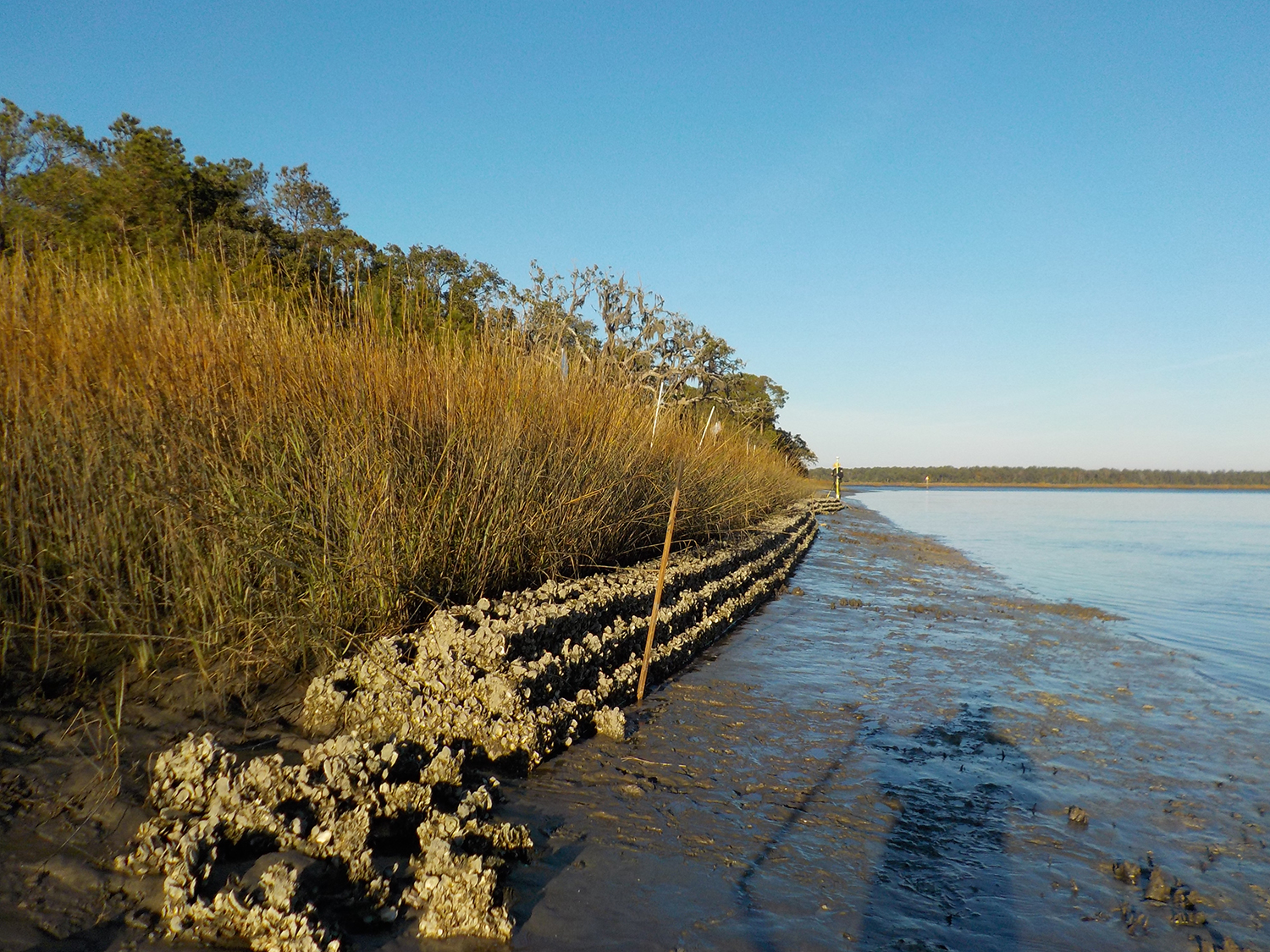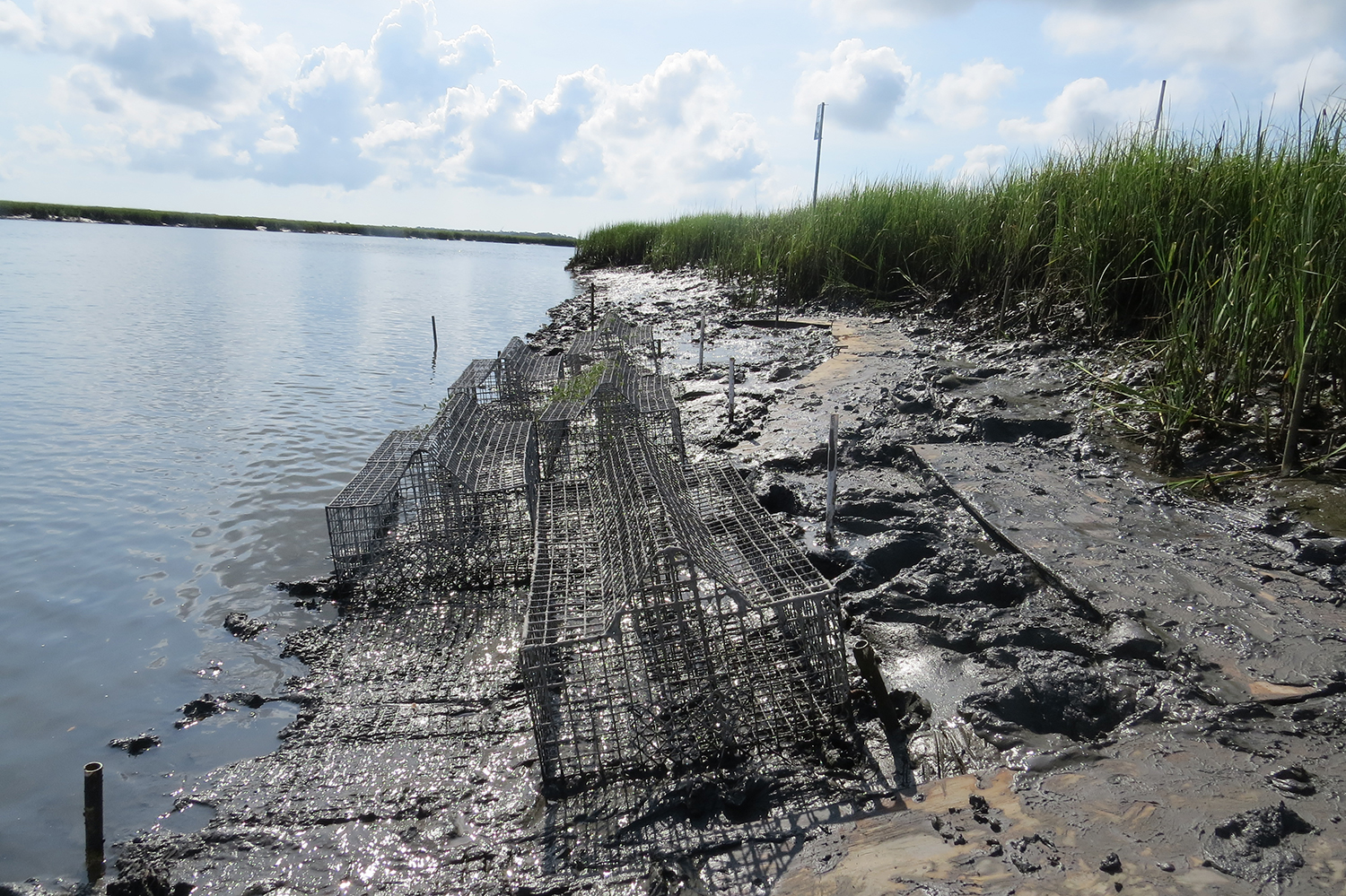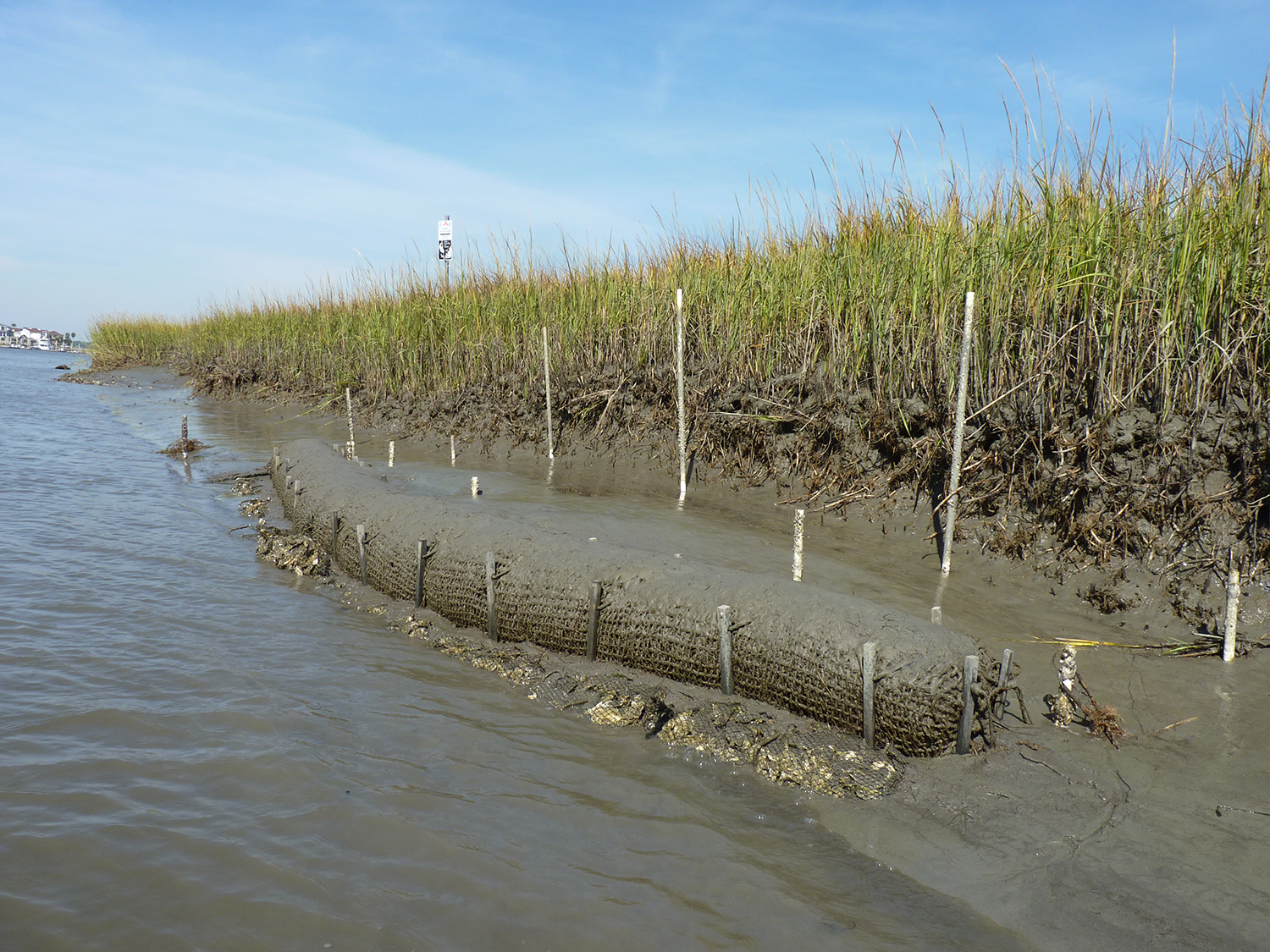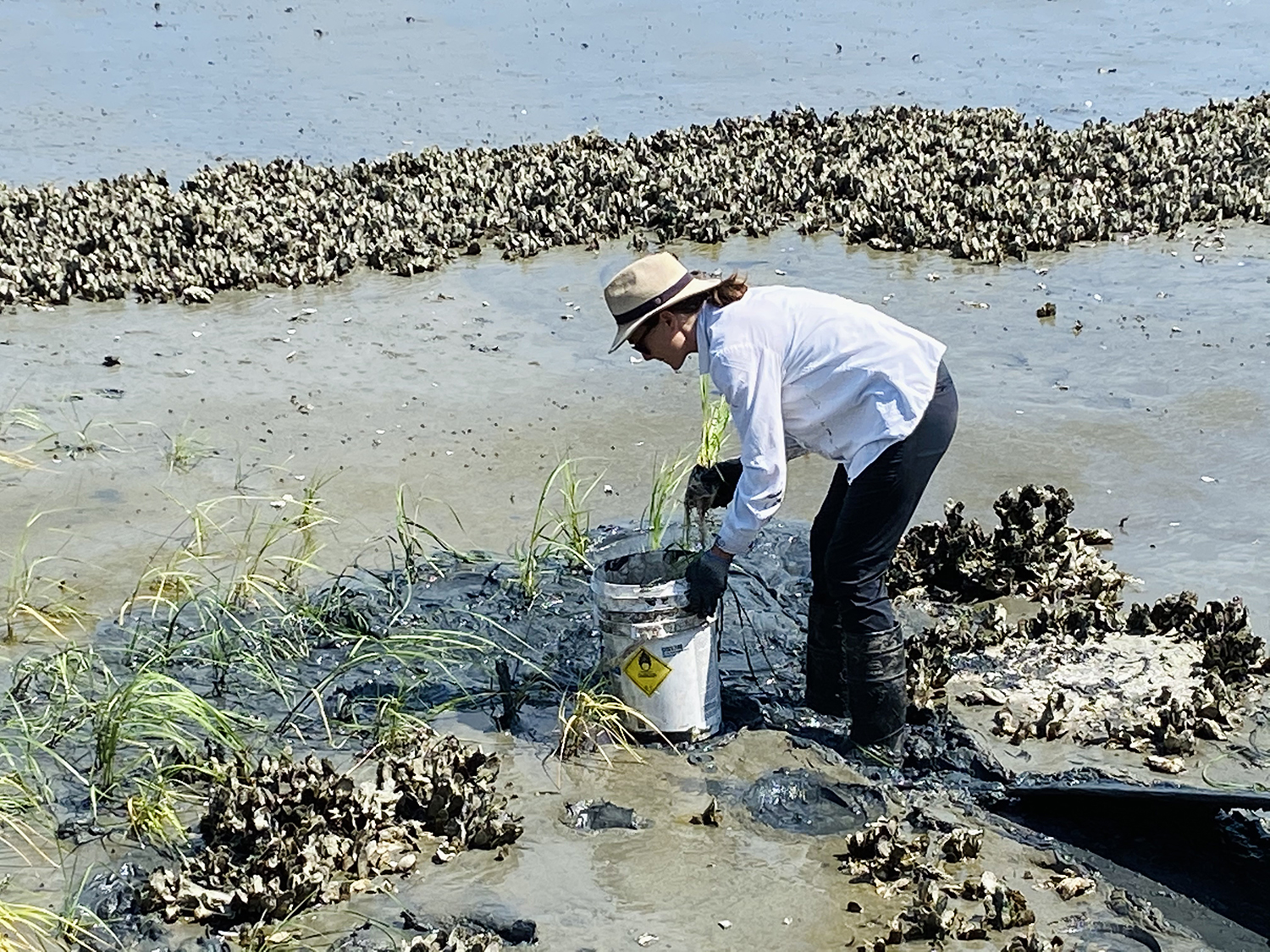Living Shoreline Methods
Shoreline stabilization techniques are classified into three general categories: non-structural, hybrid, and structural. Living shorelines, as defined by SCDES BCM, are encouraged as an alternative to traditional hardened erosion control structures in estuarine environments because they provide an environmental benefit and reduce impacts associated with hardened structures. Living shoreline methods involve planting of native vegetation and/or the installation of other green infrastructure.
Environmental conditions of a site will be considered by SCDES BCM in the evaluation of living shoreline permit applications including whether the type of living shoreline has demonstrated success. Demonstrated success can include an increase in the presence of native vegetation and/or oysters, and an increase in elevation on the landward side of the living shoreline installation.
-
Oyster Shell Bags
Oyster shell bags are created by filling mesh bags with oyster shell substrate. The oyster shell bags are installed in the intertidal zone, between an eroding bank and the mean low water line, to create a reef that will recruit oyster larvae and expand over time. This oyster shell reef structure buffers wave energy and enhances sedimentation, which can ultimately reduce erosion and expand the marsh platform. (SCDNR, 2019). Installation of oyster shell bags requires firm sediment or the use of wooden pallets to keep the bags from sinking into the mud.
Oyster shell bags are not appropriate for freshwater sites and should only be considered at sites that rarely experience a salinity below 15 ppt. Oyster shell bag reefs perform best at sites with gentler bank slopes.

Image by SCDNR
-
Oyster Castles
Oyster castles are interlocking concrete structures that act as building blocks to create an oyster reef. Oyster castles can trap sediment, provide substrate for oyster recruitment, create habitat, and buffer the shoreline from wave energy. Oyster castles are heavy and require firm sediment. Oyster castles are not appropriate for freshwater sites and should only be considered at sites that rarely experience a salinity below 15 ppt.

Image by SCDNR
-
Manufactured Wire Reefs
Manufactured wire reefs (WMRs) are specially designed wire mesh frames that attract and grow oysters. They can be built with raw materials purchased from a variety of suppliers. MWRs are typically coated with a thin layer of cement or mortar because the roughened surface encourages better oyster attachment. MWRs can trap sediment, provide substrate for oyster recruitment, create habitat, and buffer the shoreline from wave energy (SCDNR, 2019). MWRs are relatively lightweight and are an attractive option for sites with soft sediments, where heavier materials may sink deeply into the substrate. MWR technology is rapidly developing, and researchers are actively exploring a variety of configurations of wire gauge, mesh size, physical shape, and coating. Because of the availability of raw materials and the relative ease of handling and installing these materials, MWRs offer great potential to local contractors and residents interested in accessible, smaller-scale projects.
Manufactured wire reefs are not appropriate for freshwater sites and should only be considered at sites that rarely experience a salinity below 15 ppt. MWRs can tolerate steeper slopes. MWRs are viable in soft and firm sediments, but may require occasional re-positioning when installed on firm sediments. When installed on firm, sandy substrates that are also high energy, extra staking should be considered to help secure them.

Image by SCDNR.
-
Coir Logs
Coir logs are biodegradable tubes of compressed coconut husk fiber, also known as coir. Coir logs can trap sediment and buffer the shoreline from wave energy. Coir logs are appropriate for locations with lower salinity where oysters are not viable. Coir logs are best used for the short term and appropriate in conjunction with other strategies, such as to buffer wave energy while plants are getting established. Due to their biodegradable nature, Coir logs are not a practical long-term solution.
Coir logs are best suited for low energy, sheltered waterways, and are not intended for areas with high levels of energy. Coir logs can tolerate steeper bank slopes and soft or firm sediment but will require staking to hold them in place.

Image by SCDNR
-
Salt Marsh Planting
When a living shoreline is established successfully, shorelines are stabilized via sediment trapping and salt marsh vegetation will likely naturally recruit. However, for some projects, planting salt marsh vegetation may be beneficial. Salt marsh vegetation provides habitat, buffers shorelines from wave energy, enhances sediment deposition, and provides visual appeal.

Image by Kim Morganello, Clemson Extension
